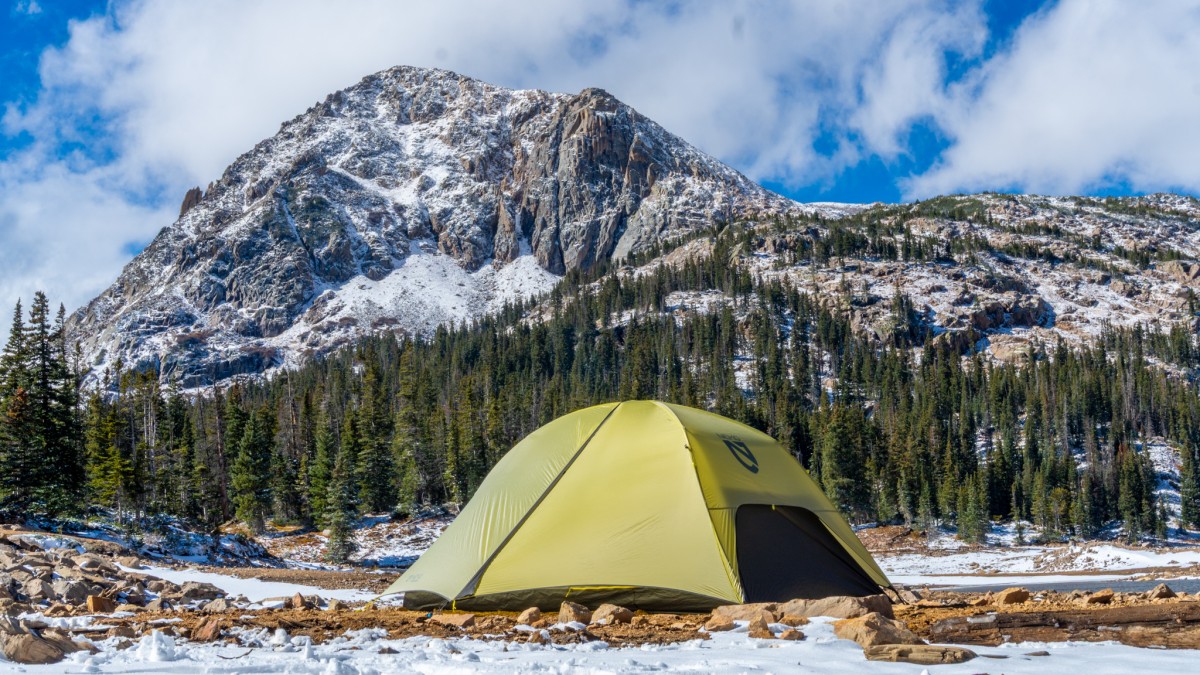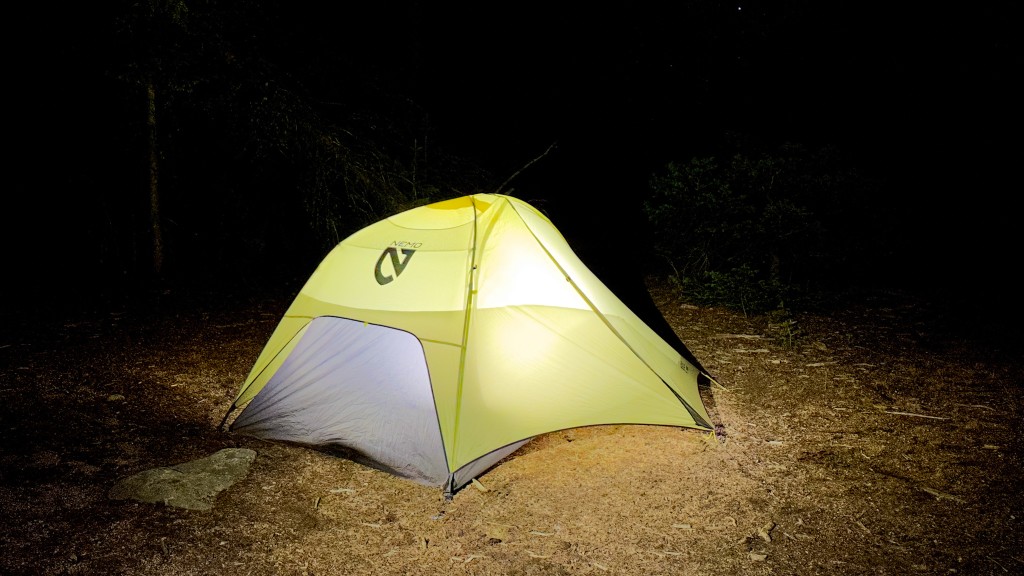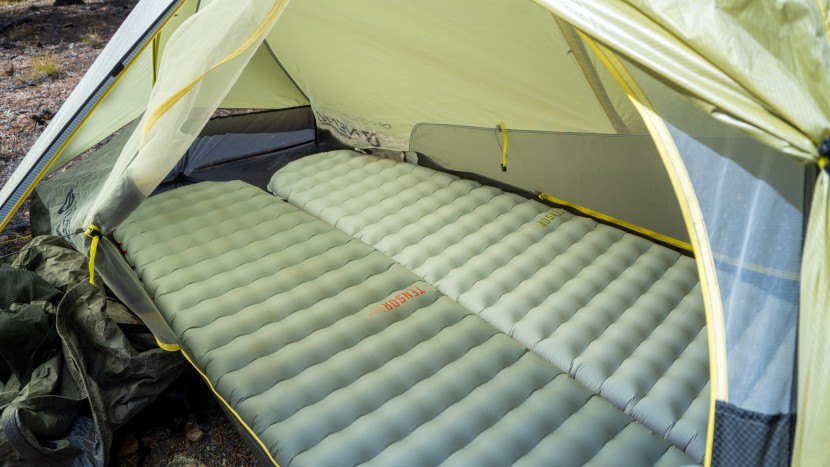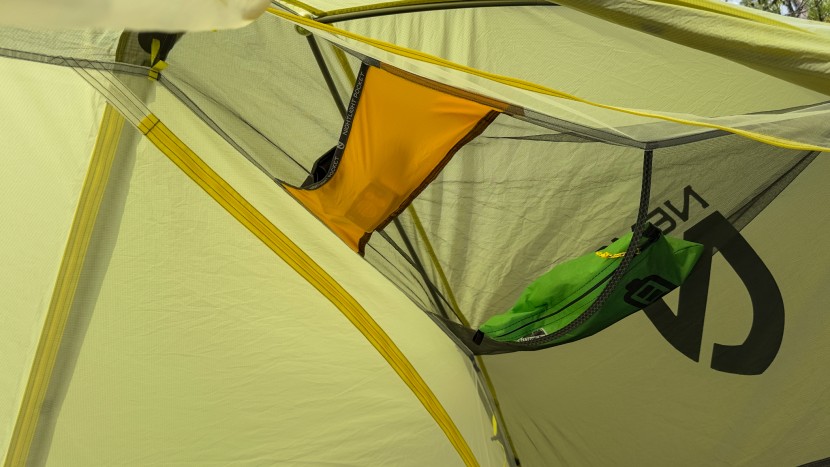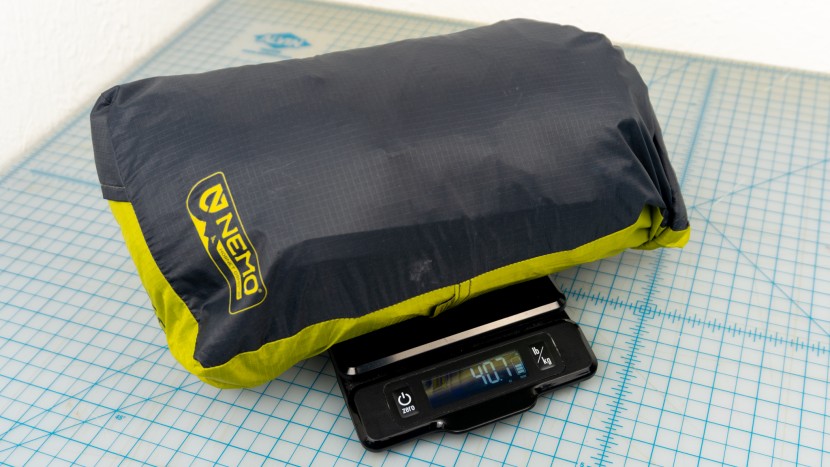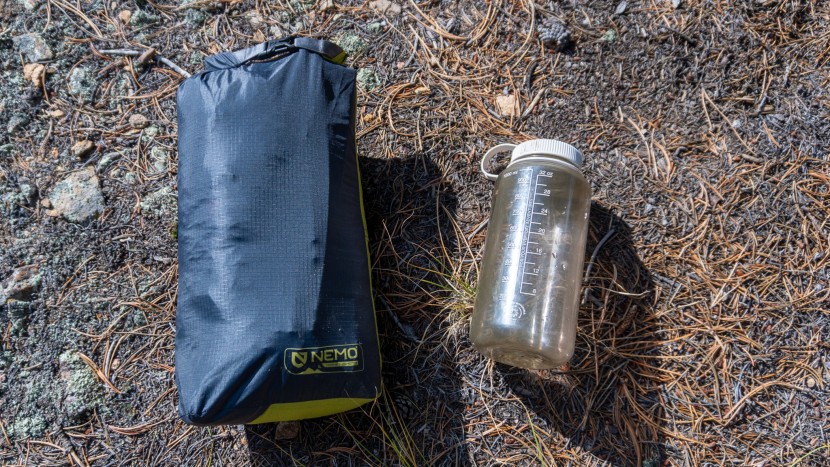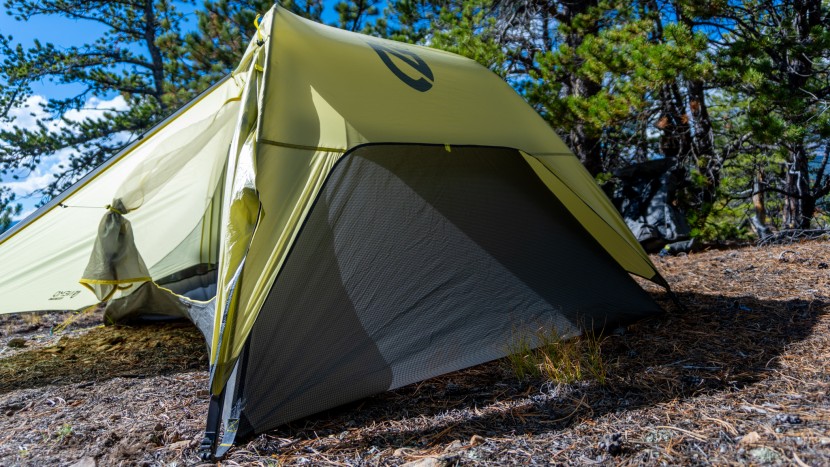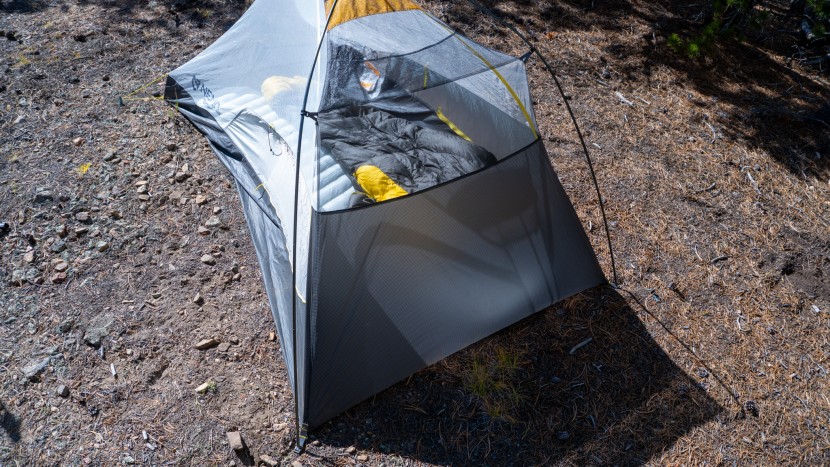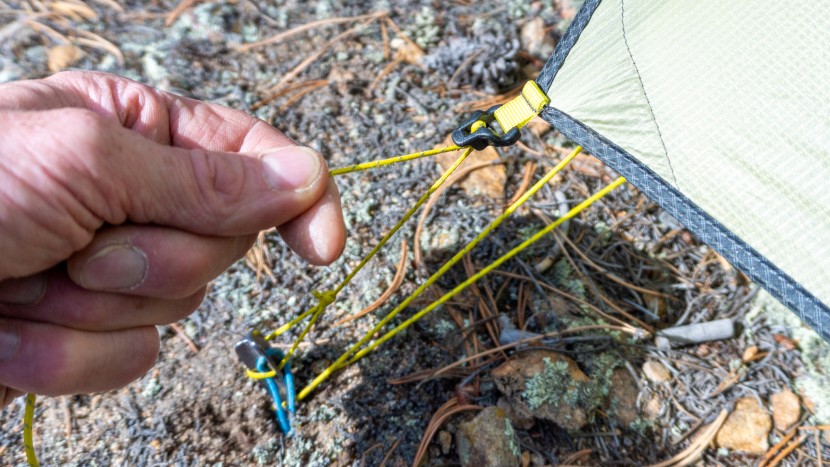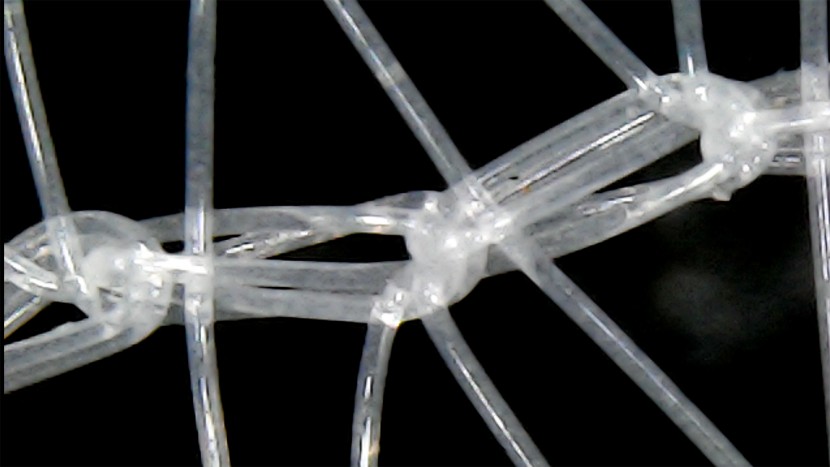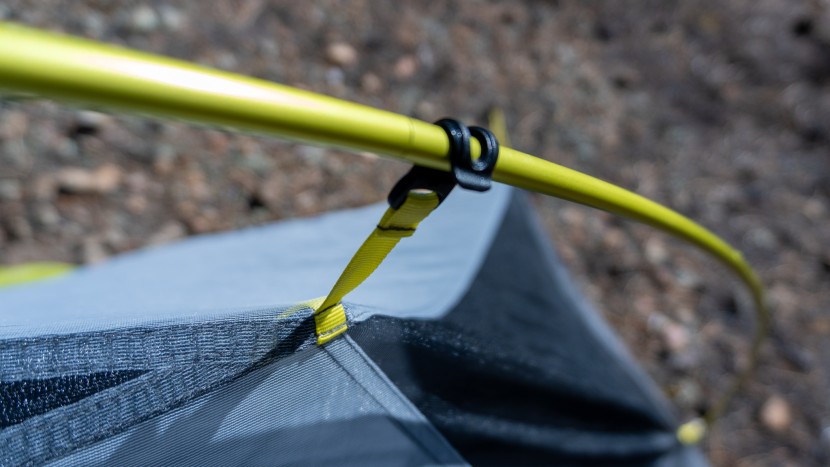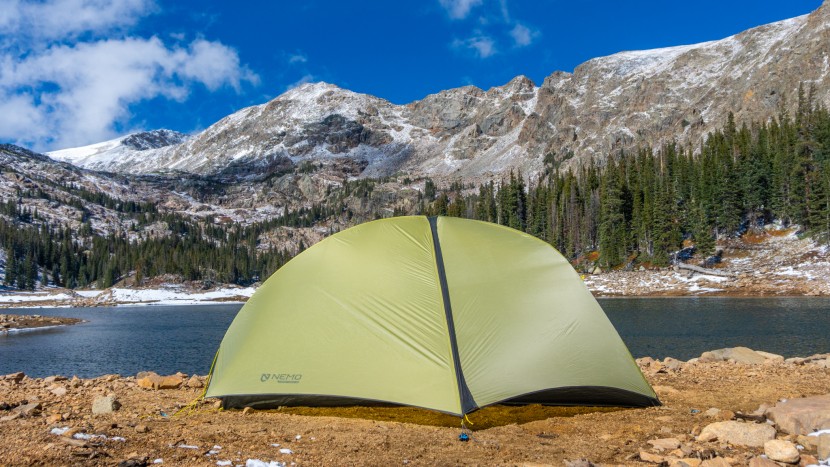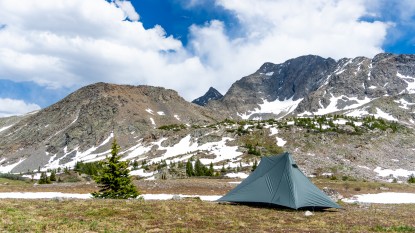Nemo Hornet Osmo 2P Review

Our Verdict
Our Analysis and Test Results
Want to dip your toes into the ultralight world, but you're confused by the venerable zoo of different ultralight tent designs? If you're seeking a familiar dome-style tent that still makes the weight cutoff, the semi-freestanding Nemo Hornet Osmo 2P is just what you're looking for. Setup is a breeze, and adjusting the tent's position is much easier to do than with a trekking-pole tent. Even though it's marketed as a 2-person tent, sleeping two inside is a little tight – for going solo, there's more room than we can easily use.
Livability
As with most two-person, ultralight tents, Livability is slightly conditional on the number of people sleeping inside the Hornet Osmo 2P. If you plan to use this tent solo, the interior will feel spacious, with enough room to complete tasks and chores while still being fully enclosed.
If you're sharing this tent with another person, you may find the interior space somewhat cramped and only suitable for close friends or partners. This could be a great choice for individuals who often use their tent alone but want the option to share it with a partner on occasion.
At its narrowest, the inner floor only measures 41", meaning that two 20" sleeping pads are literally lying right next to each other. This also means that if either you or your hiking partner uses a 20" pad and the other uses anything wider, that setup won't fit inside the Hornet Osmo 2P. Lying down, the tent should prove a good fit for anyone 6' or shorter. Ceiling height at its apex – and only at its apex – is approximately 39". So prepare to take turns standing straight up: no late-night card games facing each other.
The interior features a few niceties, including two sleeve pockets on the ceiling near the head, one of which is hued orange to transform a headlamp into a makeshift lantern. We also really enjoyed the tent door tiebacks, which dutifully do their job without fuss. Right beside the tiebacks is a simple hook-and-loop system that allows you to pull the mesh towards the rainfly, creating a little more interior space.
Weight
In total, the Nemo Hornet Osmo 2P weighs 40.7 ounces (1,154 grams). When packed in its 12.5" x 7.5" x 3.0" stuff sack, the tent takes up the same volume as approximately four 1-liter Nalgene bottles.
Here's the breakdown of all components in this kit:- Outer Fly: 9.8 oz / 277 g
- Inner Mesh: 13.8 oz / 391 g
- Tent Pole: 10.3 oz / 293 g
- Stakes (8): 4.7 oz / 134 g
- Pole Repair Shunt: .4 oz / 12 g
- Extra Guy Lines: .5 oz / 13 g
- Stake Bag: .1 oz / 4 g
- Tent Pole Bag: .2oz / 6 g
- Tent Bag: .9oz / 26
Since the tent has both an outer fly and an inner mesh, it's very reasonable for you and a tent mate to split up components into two similarly weighted loads, with each person carrying 23.5 oz (673 g). For most, these numbers should make the Hornet Osmo 2P sound very attractive. But for extremists, this tent just won't fit the bill, no matter how you try to spin it.
The tent pole, which gives this tent its structure, alone weighs 10.3 oz (293 g). Some other, lighter-weight options enlist your trekking poles to pull double duty for pitching the tent. This design, however, ties up your poles during the day. If you plan to set up camp for a few days and then hike around the area with your trekking poles, the Hornet Osmo 2P leaves your poles free for use.
The double-wall tent design is inherently heavier than a single-wall tent, but it can provide better protection from condensation building up in the morning. It also affords you the option to pitch the tent using only the mesh on particularly mild, clear, and calm nights.
But the Nemo Hornet Osmo 2P does have some weight-saving tricks up its sleeves. Without significantly impacting livability or weather resistance, you could just pack the fly, inner mesh, and six stakes, bringing the total pack weight to 37.4 oz (1,062 g), shaving 3.3 oz (92.5 g) off the standard setup. Unfortunately, the outer fly cannot be pitched separately from the inner mesh in a way that will protect you entirely from the weather, as the inner mesh provides some of the coverage at the head end of the tent.
Weather Resistance
One of the benefits of a double-wall tent like the Hornet Osmo 2P is effective condensation management. The inside of the fly will accumulate condensation, while you stay dry on the other side of the mesh. Your buddies in the single-wall tent next door, on the other hand, may be wiping up their interior with a towel! Dual doors also allow for an excellent cross-breeze, further reducing the tent's stuffiness.
When riding out a storm, the Hornet Osmo 2P should hold up well, but it wouldn't be appropriate for the worst of weather, and is certainly not suitable for when the seasons become wintry. In heavy winds or under the weight of snow, the flexible tent poles could easily bow inwards, risking a full tent collapse. However, during the normal weather of the summertime backpacking season, staking out the tent with six stakes will do a great deal to ensure the integrity of the tent sides. An additional two stakes and an extra guy line are provided to add more tension to the tent at the far sides.
The rainfly is a 15D nylon/polyester hybrid made from 100% recycled material, which is both lightweight and should resist sagging much better when wet than more conventional sil-nylon. Perhaps the biggest compromise to shave off weight from the Hornet Osmo 2P is in the design of the rain fly: the two ends are fairly aggressively cut out, leaving less overlap between the fly and inner mesh.
Although the bottom of the inner mesh is made up of a waterproof material where the fly is cut out, blowing rain and snow could use this as an opportunity to sneak in above the waterproof material. The twin doors also rise fairly high towards the pointed tent ceiling, which means that when the rainfly's doors are fully open, any precipitation that falls will fall directly into the tent.
Adaptability
Like many tents that use their own pole system, the Hornet Osmo 2P is, for the most part, a “what you see is what you get” affair. Unlike the setup of a square tarp, which is only bound by one's imagination, the setup of the Hornet Osmo 2P is pre-determined. Since the tent can stand up by itself, you do have the option to pitch it, then adjust its exact placement before committing to the location with stakes – a trick most trekking pole tents cannot do.
The Hornet Osmo 2P can be pitched without its rainfly. On fair-weather nights, this allows for maximum ventilation and the opportunity to stargaze through the black mesh above, all while still being protected from any bugs. The sides are made up of a white mesh, which, even without the fly, offers a bit more privacy come morning.
The outer twin doors may also be rolled up and stowed, as can the inner doors independently of the outer doors. Even with both doors stowed, there is a usable vestibule area that will fit backpacks on both sides.
Ease of Set-Up
It's hard to even imagine an ultralight tent being easier to set up than the Nemo Hornet Osmo 2P. especially when you have two people on the task. This simplicity really makes a difference after a difficult day of hiking or when the weather is turning for the worse – having a shelter up quickly can make a big difference to both the enjoyment and safety of a trip. The ends of the poles are colorized to help you identify the correct placement, and simple hooks and line loops attach the fly to the inner mesh.
The intuitive design of the Hornet Osmo 2P does as much as it can to guide you through all the necessary steps passively – our lead tester didn't need any instructions to set this tent up the first time. There's no way to attach the tent pole the wrong way around, as the tent only accepts the wishbone-shaped tent pole in one orientation. The poles don't go through frustrating sleeves like other tents; instead, they are simply hooked into place.
Once attached to each other, the tent will stand mostly up by itself in calm weather, making staking it down a breeze. Just like the inner mesh, the outer fly can only be put on in one direction, although it may take a second or two to ensure that it's not upside-down. Our only wish would be the ability to set up this tent “fly first,” so that you could protect the interior of the tent while finishing the setup in bad weather.
Should You Buy the Nemo Hornet Osmo 2P?
One of the most attractive aspects of this tent may just be its familiarity. Unlike trekking pole tents and very much unlike a tarp system, the design of the Hornet Osmo 2P is much more similar to a conventional dome-style tent, such as the one you may already own. The selling point of this tent is that it's significantly lighter. Buying a tent like this is an easy way to reduce the base weight of your pack, allowing you to focus your limited free time on planning a trip of a lifetime.
What Other Ultralight Tents Should You Consider?
Another semi-freestanding tent to check out is the Big Agnes Fly Creek UL1. It features a front-door entry, which some may find less claustrophobic because your head is right by the entrance. The ZPacks Duplex Classic is a bona fide ultralight tent made out of Dyneema Composite Fabric, but one that can be pitched as a semi-freestanding tent with an accessory kit. Although it uses trekking poles as its only option to pitch, the Durston X-Mid 1P is about as simple as a trekking pole tent is to set up. And it has one trick that the Hornet Osmo 2P can't match: it can be set up fly-only.


